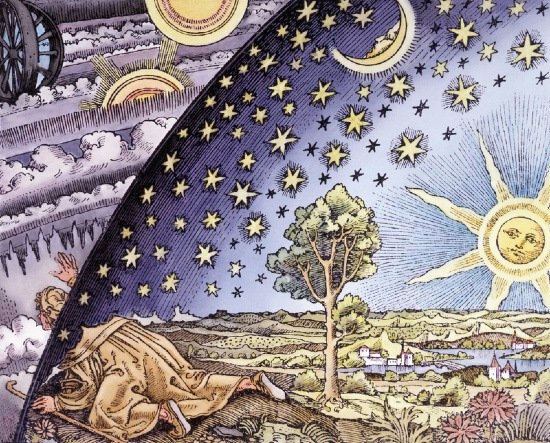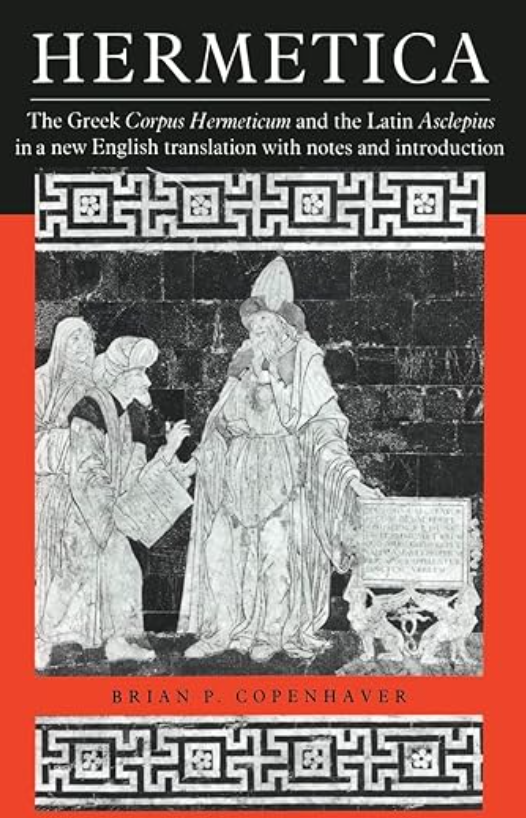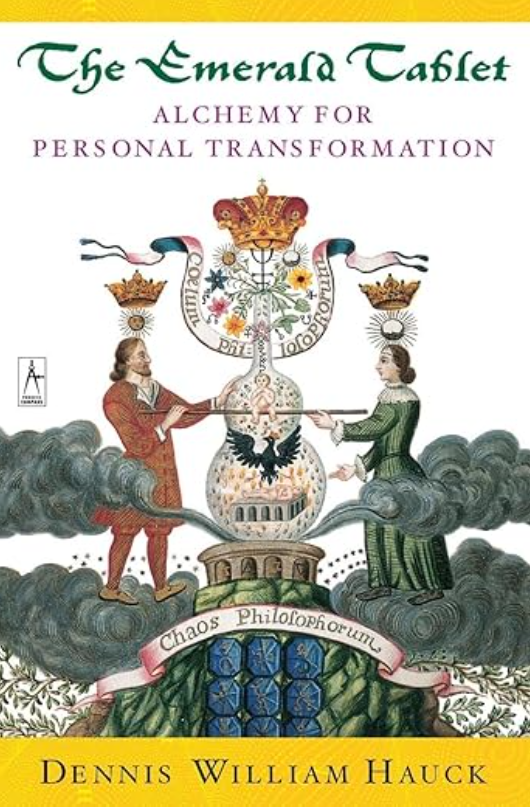
Hermeticism FAQs
Hermeticism vs Theosophy?
Discover The Similarities and Differences Between These Two Paths
Both Hermeticism and Theosophy are rich spiritual systems offering insight into the soul, the universe, and the path to higher consciousness. While they share overlapping language—karma, ascension, spiritual laws—they approach these themes through very different lenses. This page offers a clear comparison of the origins, core teachings, and spiritual goals of each tradition, helping you discern where your resonance lies.
-
Rooted in ancient Egypt and Hellenistic Greece
Centers on seven universal principles (The Kybalion, Corpus Hermeticum)
Teaches mental transmutation, inner mastery, and symbolic alignment with divine law
-
Founded in the late 19th century by Helena Blavatsky and others
Synthesizes Hinduism, Buddhism, Western occultism, and science
Focuses on soul evolution, karma, reincarnation, and divine hierarchy (Masters, Rays, Planes
Historical Context of Hermeticism and Theosophy
Understanding the historical context of Hermeticism and Theosophy gives us insight into the spiritual climates that gave rise to each system—and why they continue to speak to seekers today.
Hermeticism: Born of Syncretic Wisdom in Ancient Alexandria
Hermeticism emerged during the first few centuries CE in Alexandria, Egypt—a crossroads of Egyptian, Greek, Jewish, and early Christian thought. The core texts, such as the Corpus Hermeticum, were written in Greek but reflected a fusion of Egyptian mysticism and Platonic philosophy. These writings were attributed to Hermes Trismegistus, a mythical sage combining the Egyptian god Thoth and the Greek Hermes.
The Hermetic worldview offered an optimistic esotericism: the belief that the human being is divine in nature and can awaken to that truth through spiritual discipline and understanding of the universal laws. During the Renaissance, Hermeticism was rediscovered in Europe and became a key influence on Western occultism, alchemy, and the development of magical traditions like the Rosicrucians, Freemasonry, and later the Golden Dawn.
Theosophy: A Modern Synthesis in a Time of Spiritual Crisis
Theosophy arose in the late 19th century, during a period of intense religious questioning and scientific discovery in the West. Founded by Helena Blavatsky, Henry Steel Olcott, and William Q. Judge, the Theosophical movement was a response to both the rigid dogma of organized religion and the materialism of science.
Blavatsky's seminal works—The Secret Doctrine and Isis Unveiled—synthesized Eastern philosophies (especially Hinduism and Buddhism) with Western occult traditions. Theosophy introduced concepts like karma, reincarnation, chakras, and spiritual evolution to a Western audience decades before the New Age movement.
It became wildly influential in esoteric circles, inspiring everything from Anthroposophy (Rudolf Steiner) to New Age metaphysics, esoteric Christianity, and even Jungian psychology.
Why This Matters
While Hermeticism arose in a sacred, symbolic world teeming with myth and mystery, Theosophy emerged in a rational, skeptical age hungry for deeper meaning. One speaks the language of ancient magic and divine mind. The other, the language of spiritual science and global synthesis.
Both were revolutionary for their times—and remain powerful lenses for seekers who want to reconcile wisdom, science, and spirit.
The Key Differences of Hermeticism vs. Gnosticism
Origin and Lineage
Hermeticism is an ancient spiritual system, considered part of the Western mystery tradition. It is initiatory, decentralized, and focuses on universal laws embedded in nature and mind.
Theosophy is modern, founded during the spiritualist revival in the 1800s. It introduced Eastern concepts to the Western world and built an organized movement with a structured cosmology.
Approach to Knowledge
Hermeticism emphasizes mentalism and gnosis—knowing through inner alignment. It often rejects rigid dogma in favor of intuitive realization.
Theosophy leans toward synthesis: blending religion, science, and philosophy. It values esoteric scholarship, hierarchical structures, and clairvoyant research.
Karma and Reincarnation
Theosophy places heavy emphasis on reincarnation, soul cycles, and karmic evolution through lives on Earth and other planes.
Hermeticism acknowledges cycles and cause-effect (karma through the Principle of Cause and Effect), but reincarnation is not central—conscious mastery in this life is.
Spiritual Authority
Hermeticism is often solitary or guided by mystery schools; the practitioner connects directly with divine law.
Theosophy teaches of Ascended Masters and spiritual hierarchies (like the Great White Brotherhood) who oversee human evolution.
Cosmology
Theosophy presents a complex metaphysical model: planes of existence, root races, rays, chakras.
Hermeticism favors symbolic cosmology—mental planes, elements, the Tree of Life, sacred geometry—used for self-understanding and ritual work.
The Key Similarities of Hermeticism vs. Theosophy
Belief in Universal Laws
Both traditions teach that the universe operates according to divine principles (e.g., karma, polarity, correspondence).
Theosophy formalizes these into teachings on cosmic law; Hermeticism distills them into seven core principles.
Path of Inner Work
Both value personal transformation as essential to spiritual progress.
Meditation, contemplation, and ethical living are emphasized in both systems.
Reality is Multi-Dimensional
Hermeticism uses symbolic language to explore mental and spiritual planes.
Theosophy maps out planes of consciousness in great detail, from the astral to the monadic.
Integration of Science and Spirit
Both seek to reconcile spiritual truth with reason, science, and personal experience.
Theosophy was groundbreaking in bringing scientific language to spiritual topics; Hermeticism is more alchemical and archetypal but holds a similar spirit of inquiry.
Which Path Resonates With You?
The purpose of studying Hermeticism and Theosophy isn’t to decide which is “better” or more correct—it’s to expand your lens. Each tradition offers a unique language for describing the journey of the soul, the structure of the universe, and the human potential for awakening.
You may find yourself resonating more with one than the other—or discovering insights from both that support your own unfolding. What matters most is not allegiance to a system, but deepening your understanding of self, spirit, and reality.
In true Hermetic fashion, learning from multiple wisdom traditions is a path to greater discernment, wholeness, and integration. Let these teachings be mirrors, not rules—tools that help you clarify your own experience of the divine.
🔍 Explore More Esoteric Comparisons
Curious how Hermetic thought compares to other spiritual traditions? Continue your journey of discovery:
What Is Hermeticism? (Beginner’s Guide) →
Hermeticism vs Christian Mysticism →
Hermeticism vs Law of Attraction →
✨ Knowledge is power. The more perspectives you explore, the clearer your own path becomes.
Recommended Texts for Students of Hermeticism
-

Corpus Hermeticum
A collection of dialogues between Hermes and his disciples, covering topics such as the nature of the divine, the creation of the universe, and the path to spiritual enlightenment. It explores the relationship between the divine mind and human consciousness, offering a path toward spiritual awakening.
-

Emerald Tablet
A cryptic and poetic text that contains some of the most famous Hermetic aphorisms, including "As above, so below." This phrase encapsulates the Hermetic belief in the interconnectedness of all things and the idea that the microcosm (human experience) reflects the macrocosm (the universe).
-

The Kybalion
This text presents the foundational teachings of Hermetic philosophy. It outlines the 7 universal principles that govern the nature of reality, providing insight into the workings of the universe with practical guidance for spiritual growth, self-mastery, and understanding the deeper truths of existence.
The Power of Lineage.
The tools, healings and secrets of the ancient mystery school traditions were once veiled, known only to the privileged elite—royalty, artists, scholars.
In these remarkable times, the doors are now open to the public, with wisdom unveiled for all who seek to take the journey on the path of self-mastery that has illuminated the minds of history's brightest souls…
Leonardo DiVinci, Nicola Tesla, David Bowie… These are just some of the remarkable people who studied in the mystery school tradition.
Are you ready?

